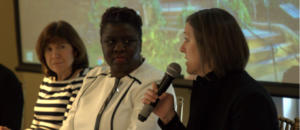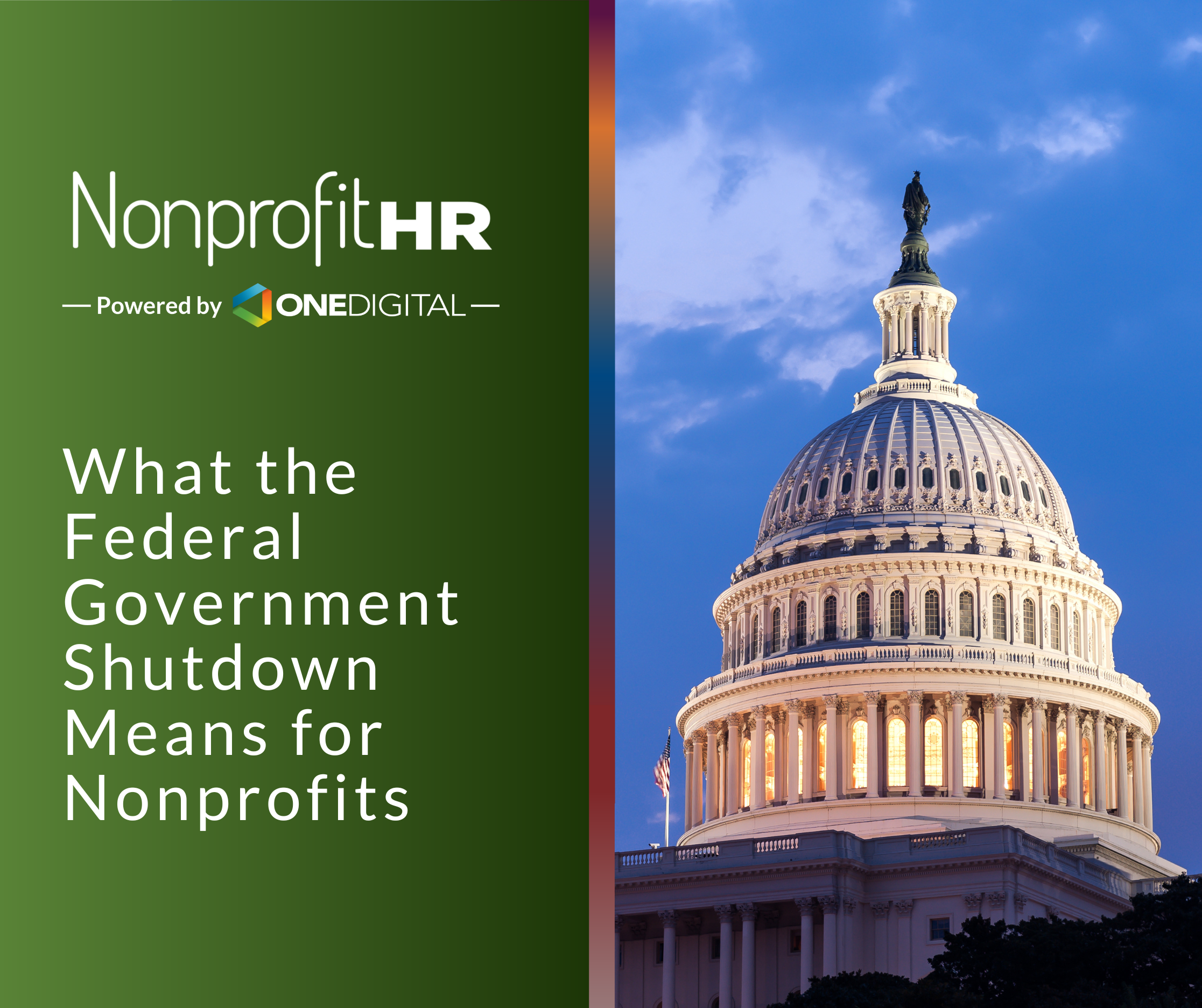WTOP: 5 ways nonprofits can…
Data clearly demonstrates that the gender pay gap and leadership inequalities remain prevalent in the nonprofit sector.
Even though women make up 75 percent of the nonprofit workforce, women represent only 48 percent of board members and 42 percent of board chairs, according to the 2017 report, Leading with Intent. GuideStar’s 2016 Nonprofit Compensation Report found that female CEOs of nonprofits were paid 8 percent less than their male counterparts. And in the workforce as a whole, in 2015, women earned 83 percent of what men earned, according to a Pew Research Center analysis of both full- and part-time workers in the U.S.
These gender inequity issues were the topic of discussion among several female nonprofit leaders this week at Pay, Power, Privilege: Gender Equity in the Social Sector, a panel conversation hosted by Nonprofit HR and NAMIC Mid-Atlantic. The discussion was moderated by Lindsey Mastis, Reporter and Anchor, ABC-7 WJLA-TV, and the panel consisted of leaders from the nonprofit sector including Lisa Brown Alexander, President and CEO of Nonprofit HR; Andrea Levere, President, Prosperity Now; Indira Henard, Executive Director, DC Rape Crisis Center; and Jennifer Lockwood-Shabat, President and CEO, Washington Area Women’s Foundation.
Highlights of this discussion included:
 Why gender pay inequity still exists and what we can do now to combat it
Why gender pay inequity still exists and what we can do now to combat it
Almost a century after women were granted the right to vote in the U.S. and more than 50 years since the passage of the Equal Pay Act, why do women continue to face pay inequity in the workplace?
The panelists offered some possible causes. Leaders noted that salary offers are often based on salary earned in a previous organization, so if inequity existed in a woman’s prior role, using that previous salary as a baseline can further perpetuate the wage gap. Women also tend to avoid negotiation conversations, although Lisa Brown Alexander noted that a younger generation of women joining the workforce seems more empowered to negotiate their salaries.
According to the Institute for Women’s Policy Research, at the current slow rate the pay gap shrinks, it will not be until the year 2059 when equality is reached for women, and it will be even longer for women of color. If we don’t work faster to close the gender pay gap, it will not be until 2124 for Black women to achieve equal pay and 2233 for Hispanic women.
Because asking about salary history can cause further problems, organizations may want to eliminate that question. Instead, hiring managers can list appropriate salary ranges for positions and have open conversations about those salaries. Further, there should be more commitment to gender pay equity from the top down, so boards she be more involved in these conversations as well.
Advice panelists would give emerging female leaders on how to negotiate their own salaries effectively
Indira Henard noted that salary transparency is key to solving the pay gap, because you cannot fix what you’re not comfortable talking openly about. To feel more empowered to advocate for themselves, women can talk to others who have been in their shoes and approach negotiations with confidence about their accomplishments and fact-based reasoning. To get a better understanding of their worth and access appropriate nonprofit salary data, women can check 990s and other sources.
Women should also consider the value alternative forms of compensation like health and wellness benefits, transit benefits and more when negotiating their salaries. And finally, women shouldn’t walk away from a salary negotiation until they’re clear about their compensation will be.
Strategies and steps panelists have seen or taken to ensure gender equity in their organizations or others
It’s one thing to be aware of a problem, but how can leadership strive to promote gender equity in their own organization and the sector as a whole?
Lisa Brown Alexander noted that Nonprofit HR has always strived to be transparent when they’ve discovered inequities. In those instances, following a review of internal and external data, she has had direct conversations with the affected employees and corrected the inequity going forward.
Jennifer Lockwood-Shabat stated that sexual harassment and wages are intertwined given the power dynamic in both. For example, the restaurant industry launched the One Fair Wage campaign to enact legislation that provided equal wages among staff. In states where this legislation was enacted, reports of sexual harassment went down.
Andrea Levere remarked that an organization’s culture must be infused with equity, which extends beyond just gender equity to racial equity, LGBT equity, age equity and more. To specifically address this, her organization asks for volunteers for racial equity working groups.
Indira Henard added that there is evidence that a strong culture where staff feels safe to talk about equity issues produces strong performance outcomes. If you take care of your staff, your staff will take care of your stakeholders. Organizations need to gauge their cultural readiness to provide for safe conversations, which may include starting with small discussion groups where staff can set the agenda.
 Why the social sector, despite its focus on equality, equity and justice, continues to struggle with this issue of gender inequity
Why the social sector, despite its focus on equality, equity and justice, continues to struggle with this issue of gender inequity
The panelists noted that nonprofits are often strapped for resources and time, and funding in the nonprofit world can be fickle, with funders regularly shifting priorities. So, unfortunately, priorities often simply aren’t focused on gender equity in nonprofit organizations.
Jennifer Lockwood-Shabat also noted that fundraising is often done in a male-dominated way. Because boards are particularly focused on fundraising, they tend to employ men to bring in those dollars. So, to combat this, boards should be more open to employing women at the same fundraising level, and more women should strive to engage in fundraising conversations. To push these changes, it can help to bring in outside experts to meet with your board, particularly if they are peers.
How men can play a role as promoters in support of gender equity in the workplace
The burden to change the system should not be solely placed on women, and men should not be left out of the conversation. From positions of power, men also have the opportunity to change the system for the better. Because board members are an organization’s top ambassadors, and many boards are made up of mostly men, those men can have the influence necessary to champion this issue in addition to women. Organizations should also take advantage of all of their social capital, and consider holding conversations among male colleagues to discuss what they can do to address inequity issues.
The #MeToo movement has stirred up inequity and power conversations, and even greater change is on the horizon for women in the nonprofit sector.


























 Why gender pay inequity still exists and what we can do now to combat it
Why gender pay inequity still exists and what we can do now to combat it Why the social sector, despite its focus on equality, equity and justice, continues to struggle with this issue of gender inequity
Why the social sector, despite its focus on equality, equity and justice, continues to struggle with this issue of gender inequity 


